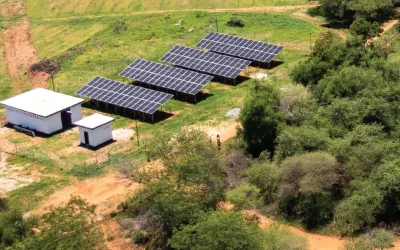Harvesters get down to business
Harvesting of the early planted wheat has started in some parts of the country with some farmers benefiting from combine harvesters under the Agribank Special Purpose Vehicle (SPV) facility.
SPV, a financial facility to lease and manage agriculture implements as part of measures to boost farm production and efficiency.
The combine harvesters are part of the US$51 million John Deere facility that was launched by President Mnangagwa to transform the agriculture sector and ensure food security.
Te Government gave Agribank permission to establish a special purpose vehicle to assist farmers in harvesting and tillage services. The early planted wheat is now ready for harvesting, while the late planted crop is at ripening stage.
Zimbabwe is expected to harvest nine months’ supply of wheat from the 2020 winter crop, saving Government up to US$100 million in imports.
While the county will import to cover the remaining three months’ supply, the Ministry of Lands, Agriculture, Water and Rural Resettlement will introduce summer wheat production starting with the 2021-2022 season to ensure self-sufficiency.
Zimbabwe Commercial Farmers Union president, Mr Shadreck Makombe yesterday confirmed that farmers with an early crop had started harvesting and said there was need for more combine harvesters to ensure the swift harvesting before it gets affected by early rains.
“Full-scale harvesting of wheat is yet to start because most of the wheat is yet to dry. Harvesting at a large scale should progressively commence in the next two weeks when most wheat would be ready for harvesting,” he said.
Mr Makombe said farmers had been facing challenges as combine harvesters were not enough and private companies were charging exorbitant charges.
Zimbabwe National Farmers Union (ZNFU)vice president, Mr Edward Dune said machinery for harvesting especially combine harvesters for now was not a challenge.
“Given that a normal to above normal season is expected ZNFU advises producers to expedite harvesting operations to avoid quality compromises if it rains before wheat is harvested,” he said.
Guruve farmer, Mr Cuthbert Muzerengi who is one of the beneficiaries of the Agribank SPV facility in Mashonaland Central, said the scheme had come at the right time and will help farmers catch up with the summer crop.
“We used to have challenges harvesting wheat and this discouraged many farmers from growing wheat. When Vice President Chiwenga came here some weeks ago he promised farmers to help with combine harvesters.
“With the provision of a combine harvester, we will be able to harvest crops in time for the next season and this will also boost wheat production in the area. If our inputs come in time we will have bumper harvests.
Agribank provincial manager for Harare and Mashonaland Central, Mr Danmore Chitema said they had started moving combine harvesters to all provinces to help farmers harvest.
“We have a programme where we are assisting farmers harvest their crops and we are starting with wheat. We have about 14 combine harvesters which will be taken to provinces. We are here to launch the first combine harvester in Mashonaland Central and the next combine harvester will come next Monday.
“We have a programme of harvesting 250 hectares of wheat in Mashonaland Central and the two combine harvesters will go a long way in removing the crop off the fields ahead of the rainfall season.
“We are helping farmers who bank with Agribank and even those who do not,” he said.
Zimbabwe needs at least 400 000 tonnes of wheat a year to meet demands, a tonnage the ministry is keen to achieve in line with the
Government’s Vision 2030 of an upper middle income economy.
The ministry is working on the multiplication of wheat seed in preparation for the 2021-2022 summer wheat cropping season.
Farmers planted 45 000 hectares of wheat and the hectarage is expected to increase next winter and summer seasons.
Last season, wheat farmers produced 90 000 tonnes, leaving a deficit of 310 000 tonnes. The present landed price of wheat per tonne is between US$380 and US$407, which translates to at least US$124 million being spent on imports to fill the gap.-herald.l.zw








